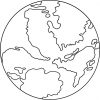How to use the co-creation planet.
A short introduction in the Co-Creation Planet,
based on the Erasmus+ ‘T-CREPE’ project.
The planet application works better
on desktop, laptop and tablet screens
The following “Key Planet” is an example in which one may dive into, explore the different levels and regions and get acquainted with the tools, before creating a planet of their own.

